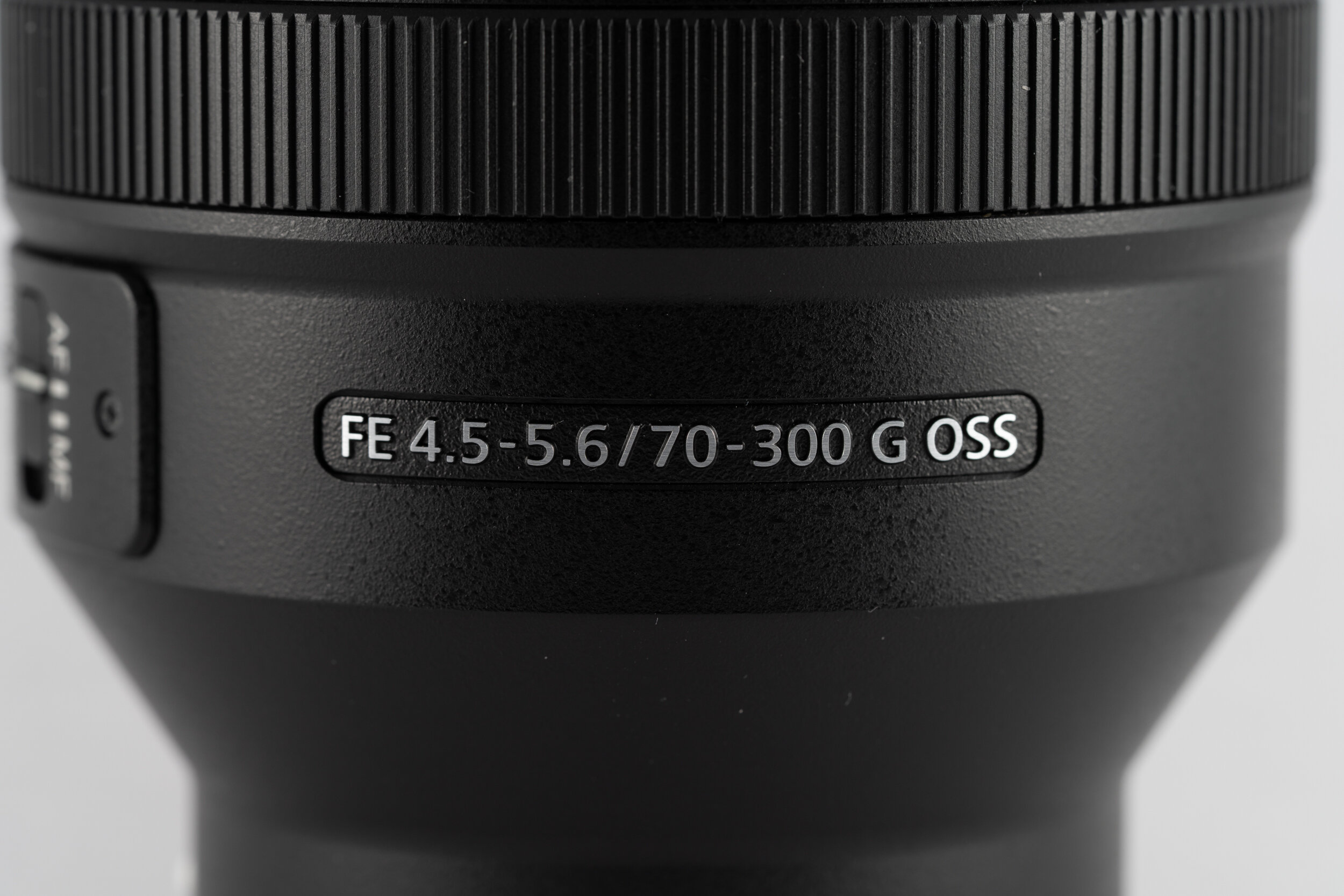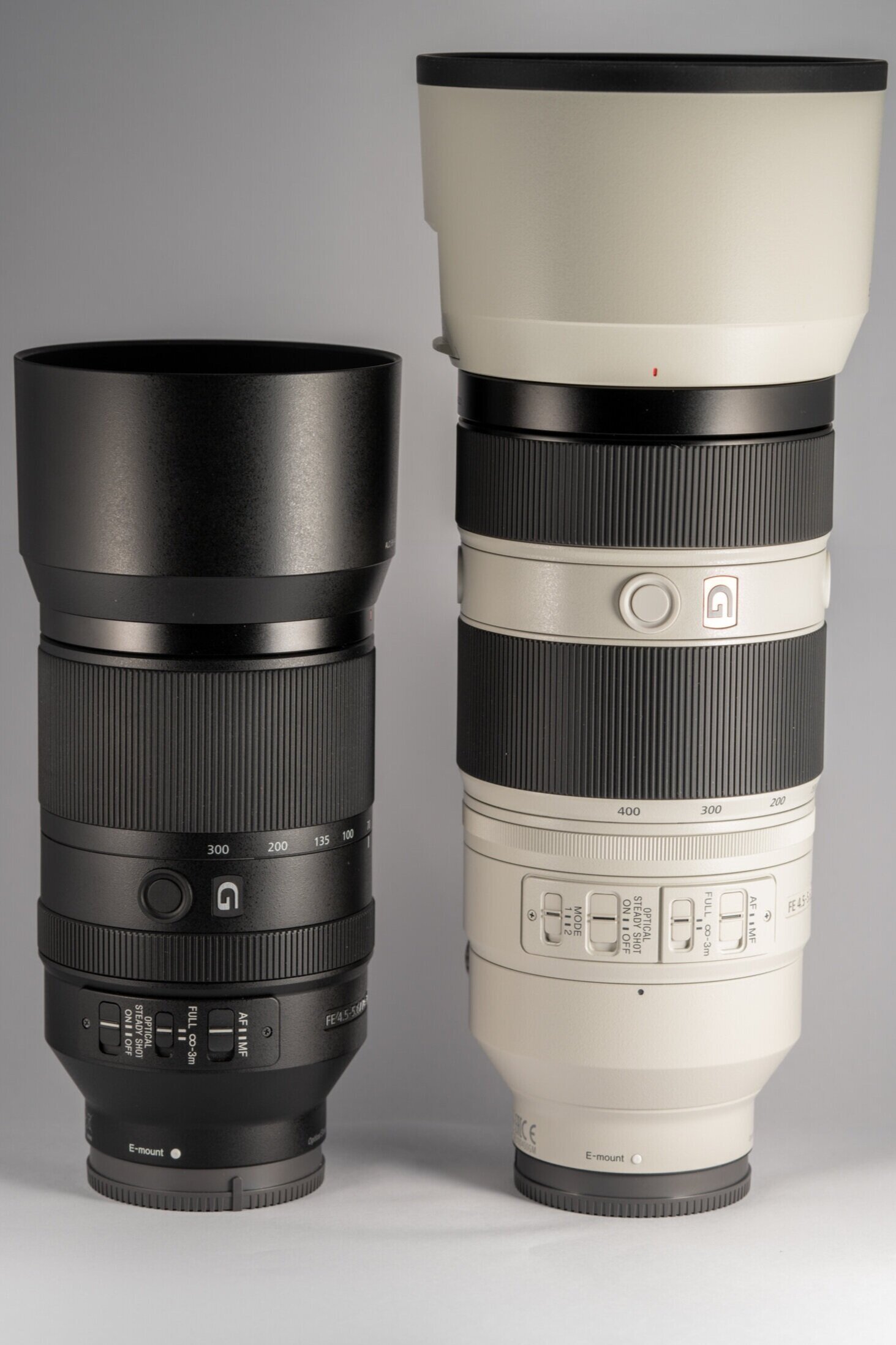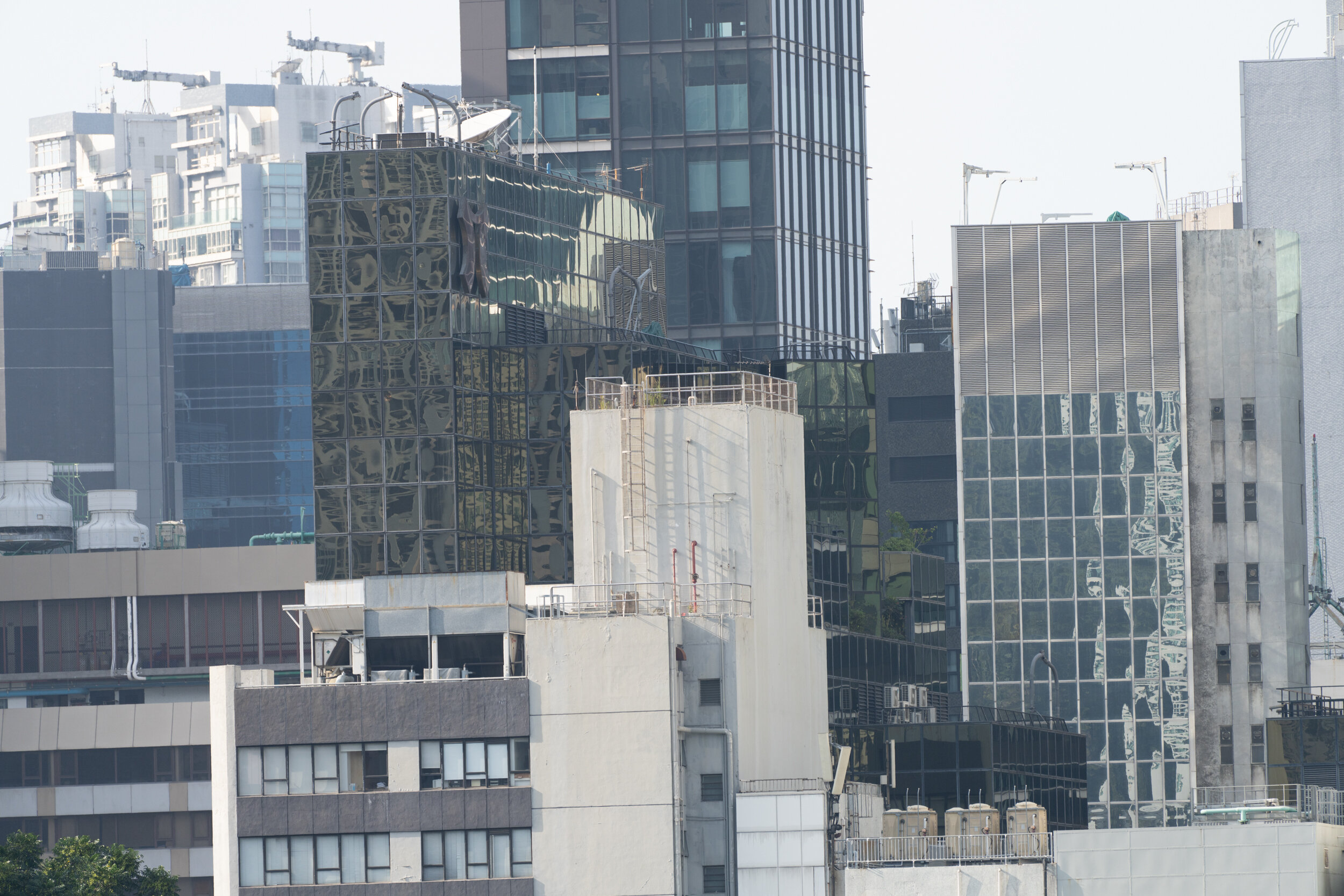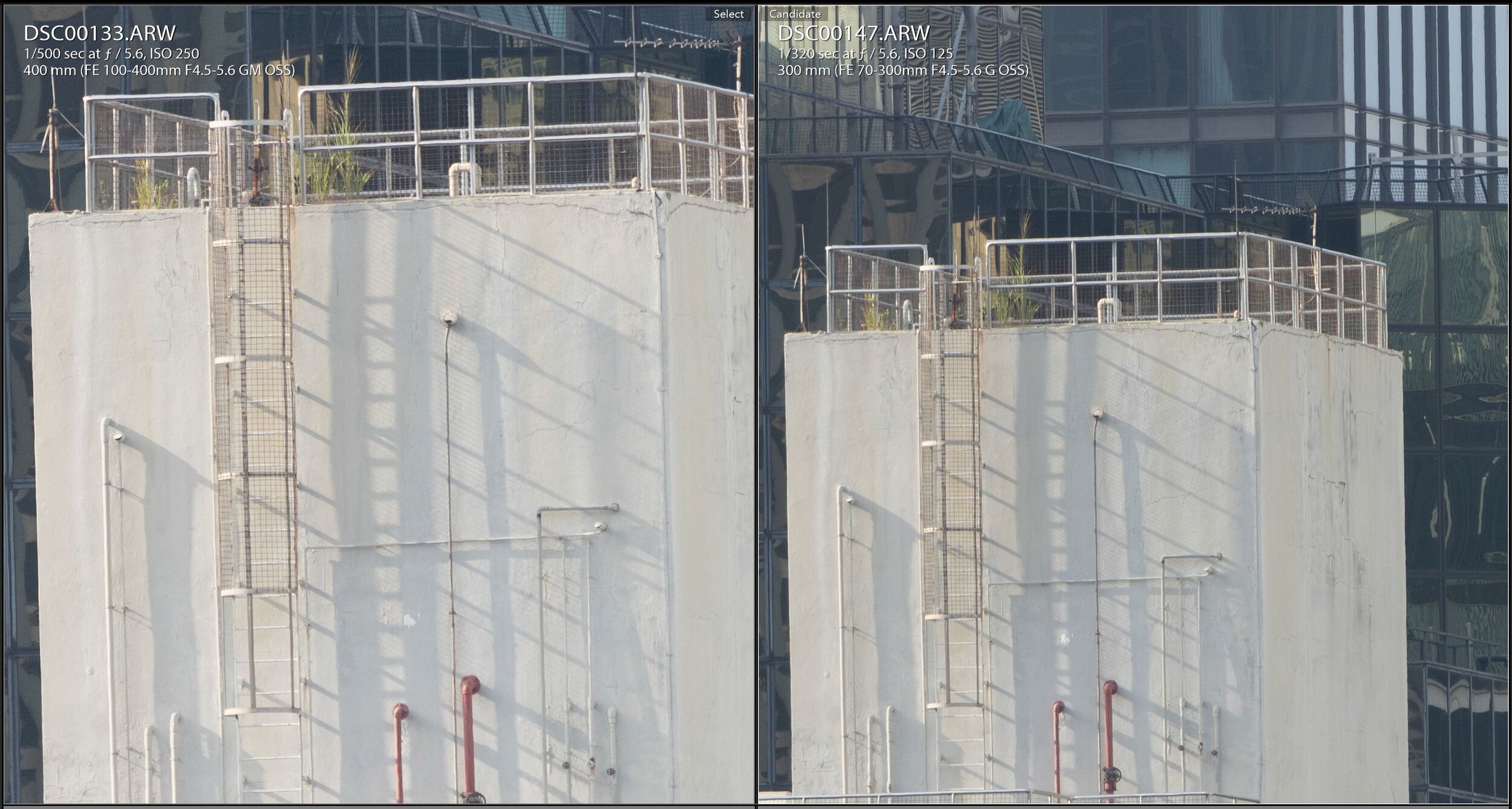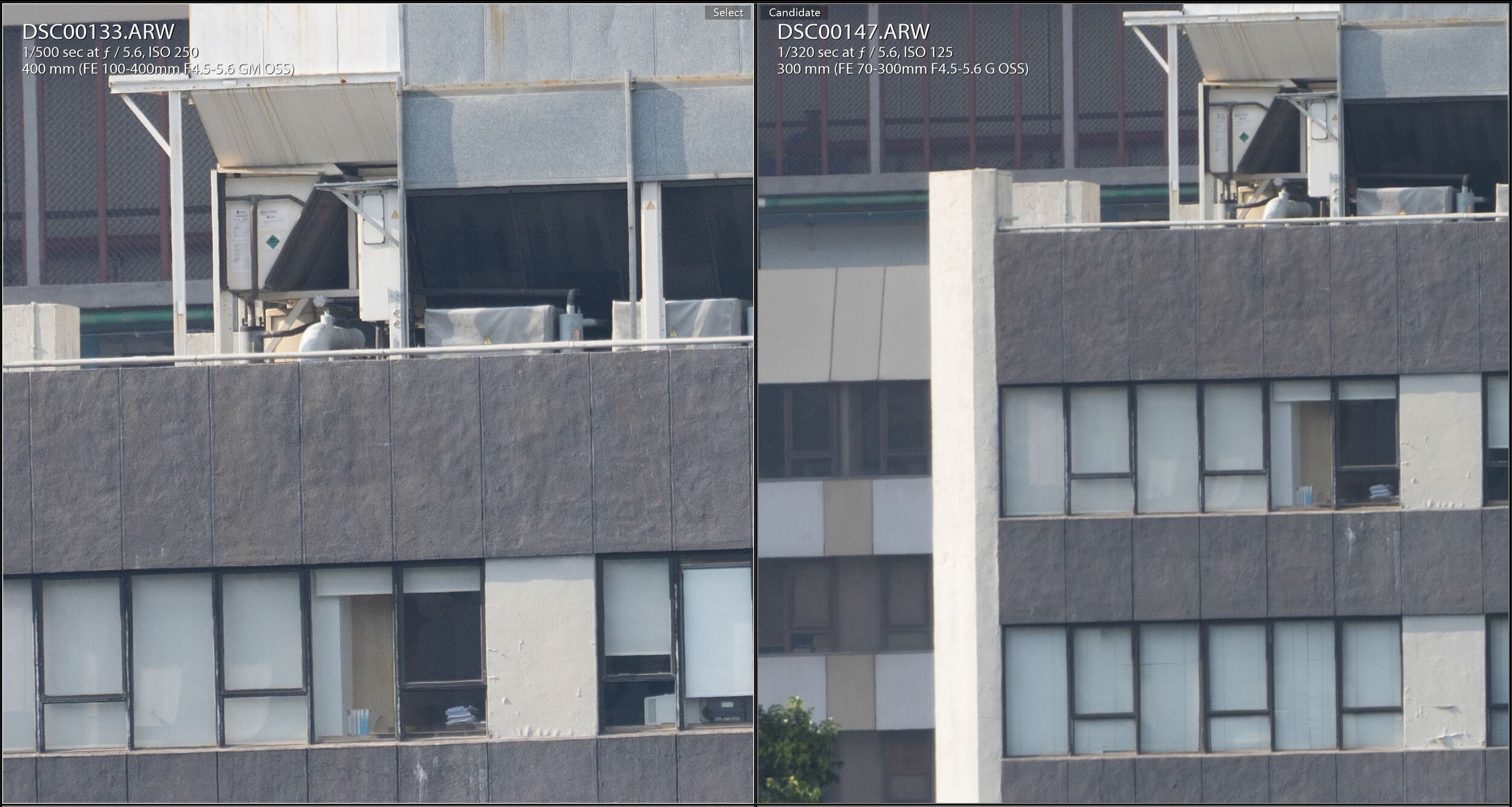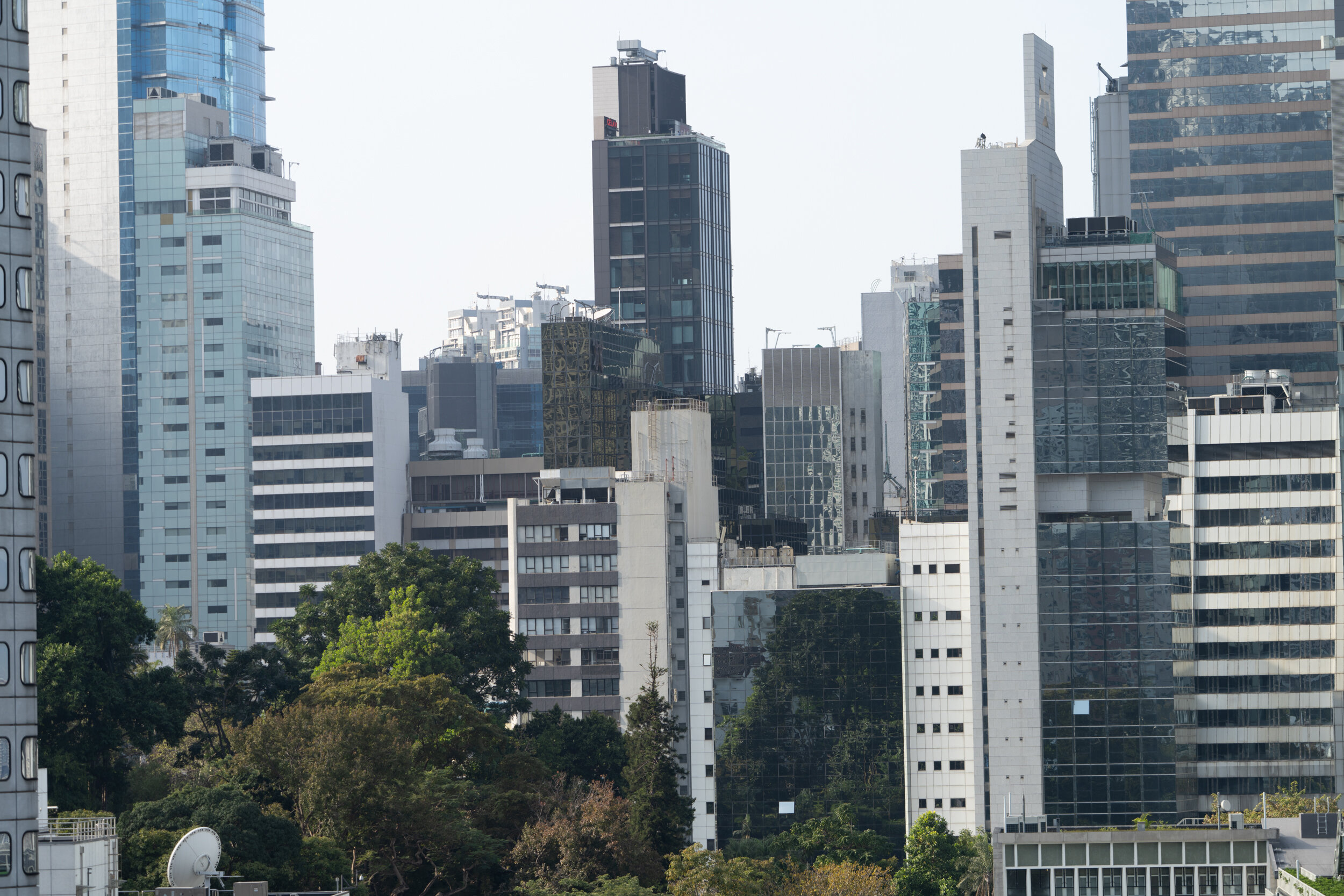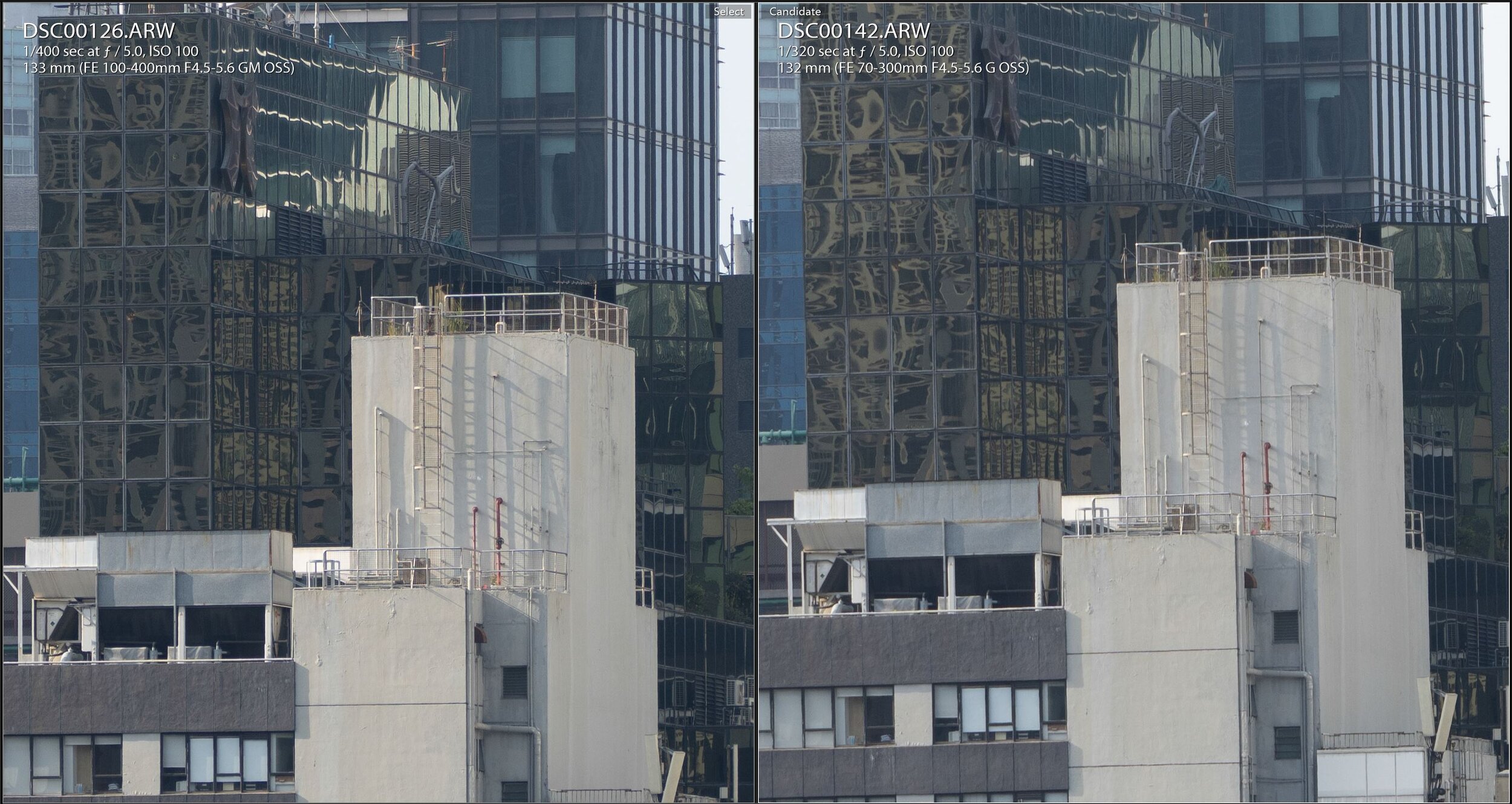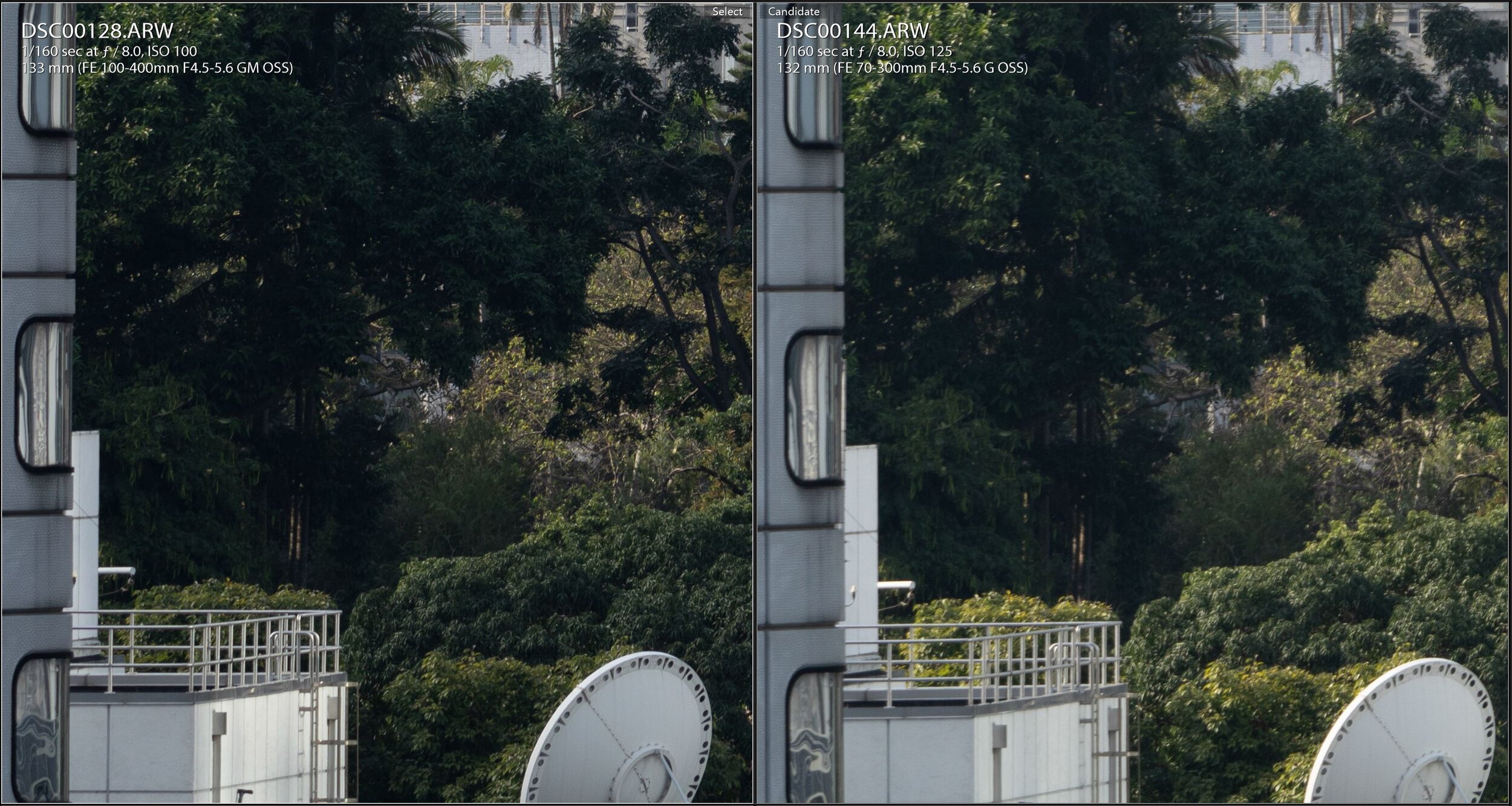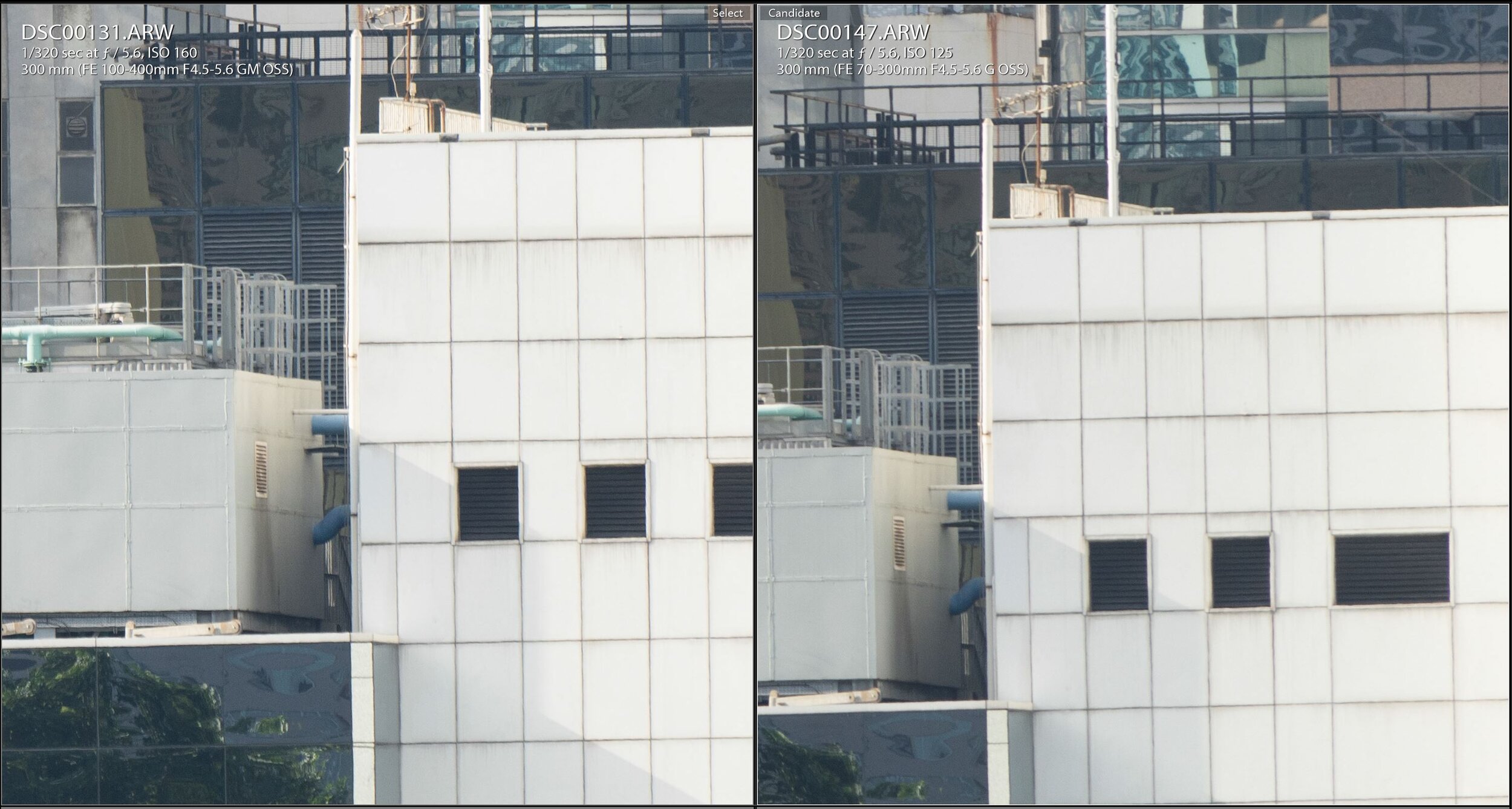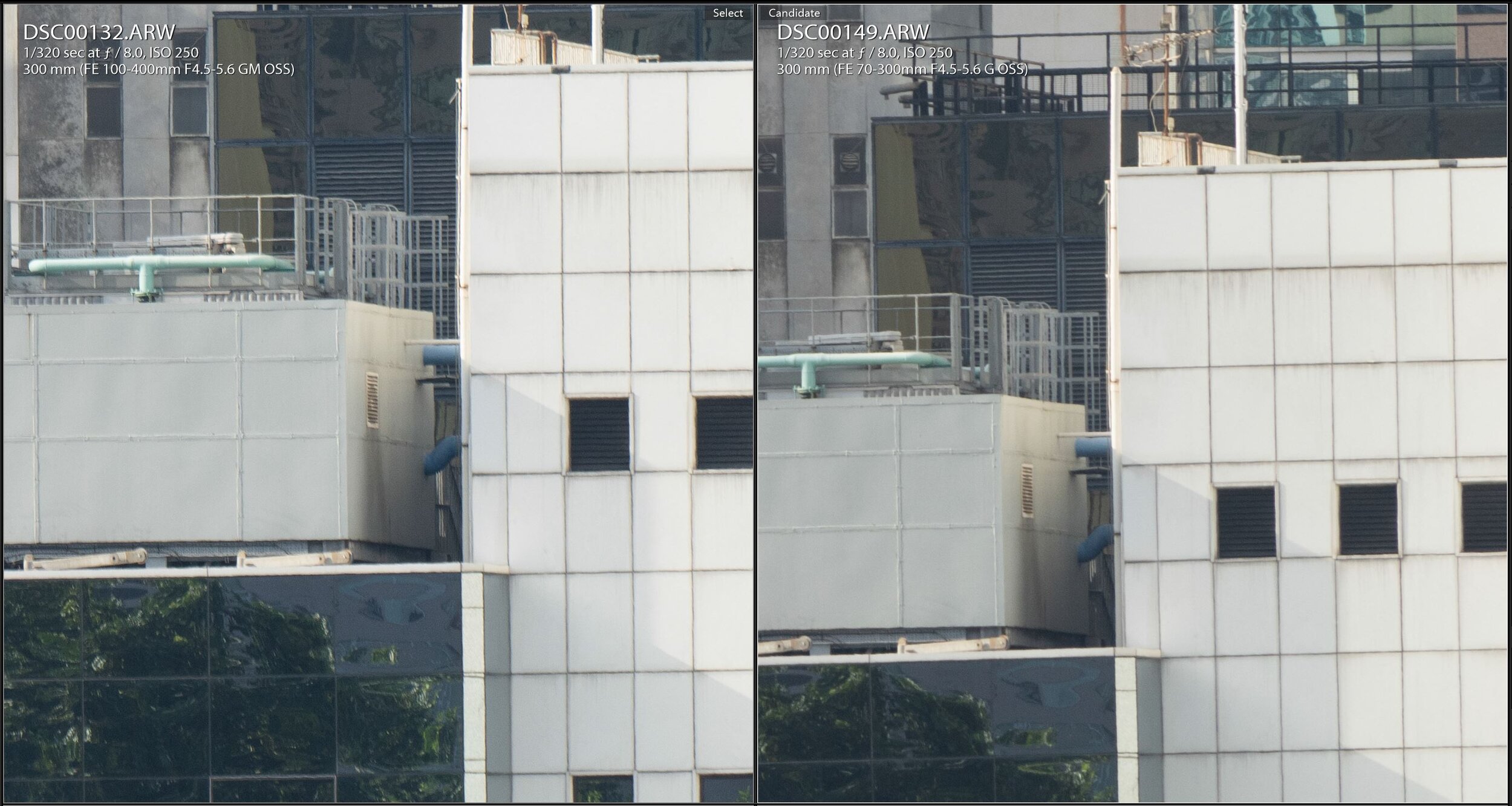Sony FE 100-400mm G Master vs Sony FE 70-300mm F4.5-5.6 G OSS
Announced - Apr 2017
Pro
Amazing IQ
Build quality
Fast AF
Compatible with teleconverter
Con
Expensive
Big and Heavy
Sony FE 70-300mm F4.5-5.6 G OSS (SEL70300G)
Announced- Mar 2016
Pro
Size and Weight
Price
Con
Soft corner
Body
The 100400GM is 6cm longer, and 550g heavier than the 70300G. The length difference makes it difficult to store in the bag. The size is not a huge issue, and still ok to shoot handheld without a monopod. However, I definitely felt the weight after shooting for a few minutes. There is no tripod collar and foot on the 70300G, and it also doesn’t have the rubber gasket on the lens mount. However, 100400GM is more than double the price of the 70300G.
The 100400GM is better built with rubber gasket on the lens mount to help with dust/weather sealing. The rear element is more recessed in the 100400GM to accommodate the teleconverter.
These are variable aperture lens, and the table above shows the largest aperture at various focal lengths. There is no significant aperture advantage on 100400GM to 70300G.
Image Quality
This is comparing the 2 lens shooting at their widest/narrowest focal length at the largest aperture. This also shows the difference between 70mm vs 100mm, and 300mm vs 400mm. At the widest focal length, the 70300G looks acceptable at the center, but the 100400GM has more details. Then moving to the corner, the 100400 is significantly sharper with less chromatic aberration. At the narrowest focal length, the center of both lens looks good. The 70300G improve significantly compared to at 70mm.
100mm comparison, starting at largest aperture (f/4.5 on 100400GM vs f/5 on 70300G), the 100400GM is sharper than the 70300G. 70300G corner is really soft. At f/5.6, the center is very similar, but 70300G is still soft. The 70300G corner finally improves at f/8, but is still weaker than the 100400GM.
135mm comparison, starting at largest aperture, the centers are really similar between the lens. 70300G corner is a bit better than at 100mm but still soft. At f/5.6, the centers are very similar, but 70300G is still soft. The 70300G corner finally improves at f/8, but is still weaker than the 100400GM.
200mm comparison, starting at f/5.6, the centers are really similar between the lens. 70300G corner is still soft, improves at f/8 but is still weaker than the 100400GM.
300mm comparison, starting at f/5.6, the two lens are really similar at center and corner.
Conclusion
The 100400GM is definitely the lens to go for ultimate image quality. It is sharp wide open across the entire range, while 70300G is soft at the corner. On the other hand, it is 2x more expensive, 40% longer and heavier than the 70300G. Depending on the budget and the requirement, both are valid full frame telephoto zoom lens options. However, I think the newly E 70350G is probably a better choice for APS-C than the 70300G, as it seems to have good reviews and is even lighter.


